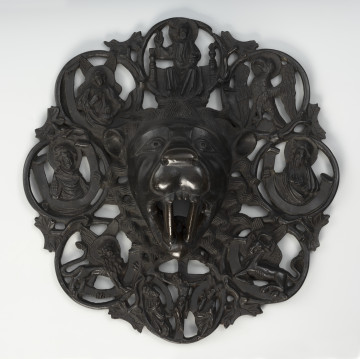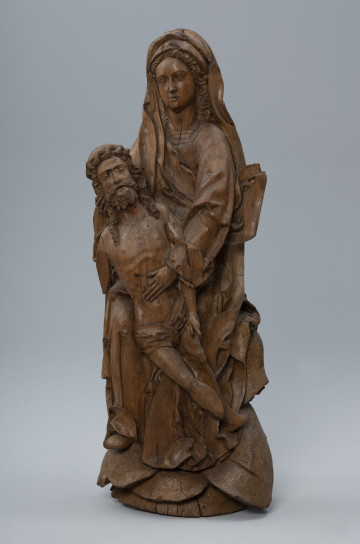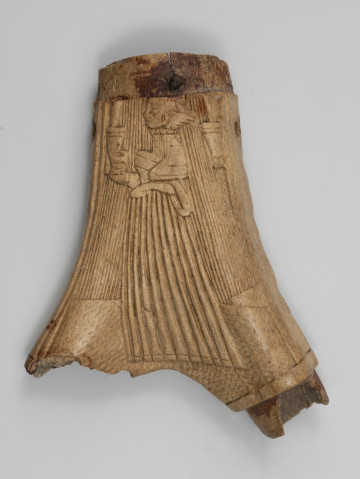
Lion's head-shaped entablature
circa 1340 — 1344
National Museum in Szczecin
Part of the collection: Medieval sculpture of West Pomerania
The predella, in the shape of a long wooden platform, once formed the basis of a triptych of St John the Baptist. It is a part of the St Anne's Collegiate Church in Kołobrzeg. The painting adorning its front depicts Mary and the Child together with a group of Fourteen Holy Helpers lined up on either side of her. On the left, the following Saints are depicted: Eustace, Christopher, Cyriacus, Erasmus, Agathius, Denis and Barbara, and on the right: Catherine, Blasius, Vitus, Giles, Pantaleon, Margaret and George.
The Fourteen Holy Helpers are a group of saints singled out for miraculous action in areas of importance to the people of Europe in the 14th and 15th centuries. For the most part, they are legendary inhabitants of the Roman Empire who suffered martyrdom during the persecution of Christians. According to legend, the group appeared near the Cistercian monastery of Langheim – now part of the town of Lichtenfels in Upper Franconia. The site where the Basilica of the Fourteen Holy Helpers was built (in the area of the town of Bad Staffelstein, less than 5 km west of the monastery) has been a popular pilgrimage destination from the mid-15th century to the present day. A wide range of saints that bring relief from many things, including from headaches (St Denis the sword-wielding bishop), sore throats (St Blaise – the bishop with the long candle), protect against sudden death (St Christopher – with a child on his arm) or caring for knights (St George piercing a dragon with his sword) and epilepsy sufferers (St Vitus – a young man with a cock) influenced the popularisation of the cult, which is why they were eagerly depicted on late medieval altars.
The predella is presented in the permanent exhibition Mystery of Light. Medieval art in Pomerania.
Kinga Krasnodębska
Author / creator
Object type
predella, sacred object, painting
Technique
woodcarving techniques, carpentry techniques, tempera
Material
linden wood, canvas, tempera
Origin / acquisition method
legal transfer
Creation time / dating
Creation / finding place
Owner
Muzeum Narodowe w Szczecinie
Identification number
Location / status

circa 1340 — 1344
National Museum in Szczecin

circa 1520
National Museum in Szczecin

1501 — 1600
National Museum in Szczecin
DISCOVER this TOPIC
Castle Museum in Łańcut
DISCOVER this PATH
Educational path